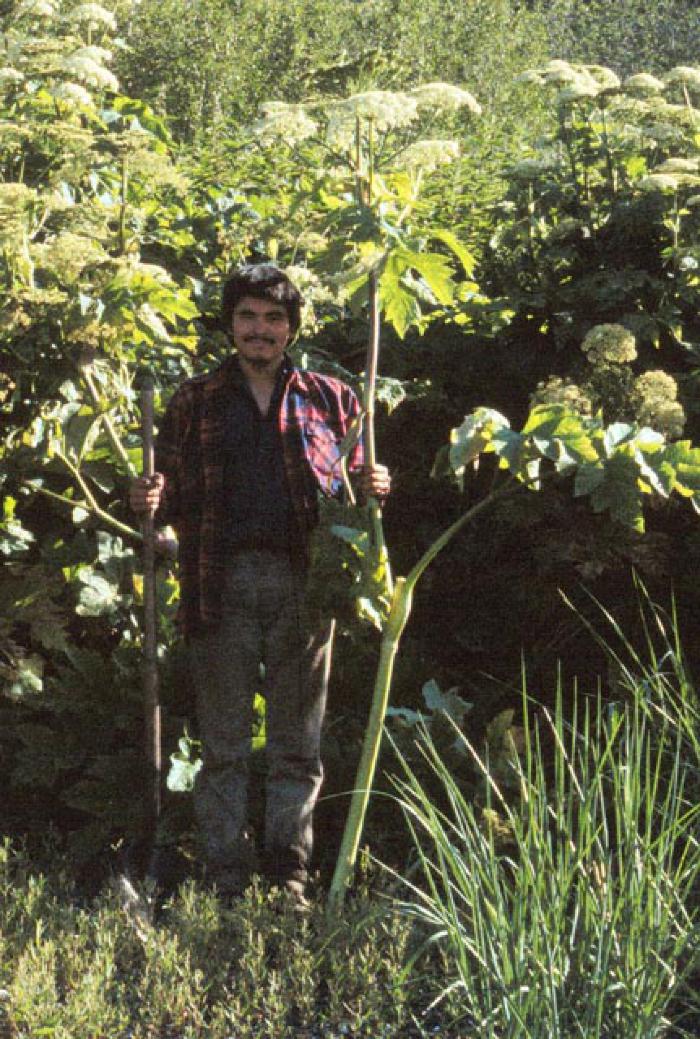Cow Parsnip — Ugsuuteq (N), Ugyuuteq (S)

Cow parsnip (Heracleum lanatum), known locally by its Russian name puchki, is an herbaceous plant that can grow up to eight feet tall. It has a fleshy stalk topped by large clusters of small white flowers. Cow parsnip thrives in open environments: forests, mountain meadows, and along the coast. It can be found in northern habitats from the Canadian Maritimes all the way to Japan. It prefers sunny locations and flourishes in the rich organic soil that forms over archaeological sites.
Alutiiq people traditionally harvested young, tender, cow parsnip stems from mid-May through early July. Be careful when picking this plant, however. Hairs on the plant’s stems and leaves can irritate your skin, causing rashes, itching, and blistering. Early morning or late evening are the best times to pick cow parsnip because light can enhance its irritating qualities.
Today, people peel away the stem’s outer skin and eat the underlying flesh either raw or mixed with oil. Fresh cow parsnip leaves are also used to wipe away the slime on raw fish and to flavor fish when baking. However, people consider the leaves to be poisonous and they are never eaten. A poultice of hot, mashed cow parsnip roots is said to ease many common aches and pains.
